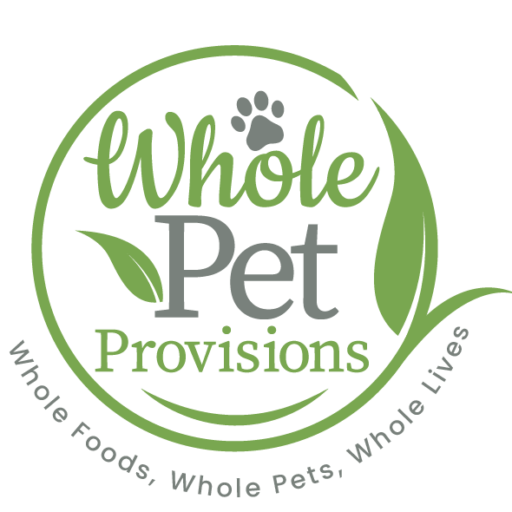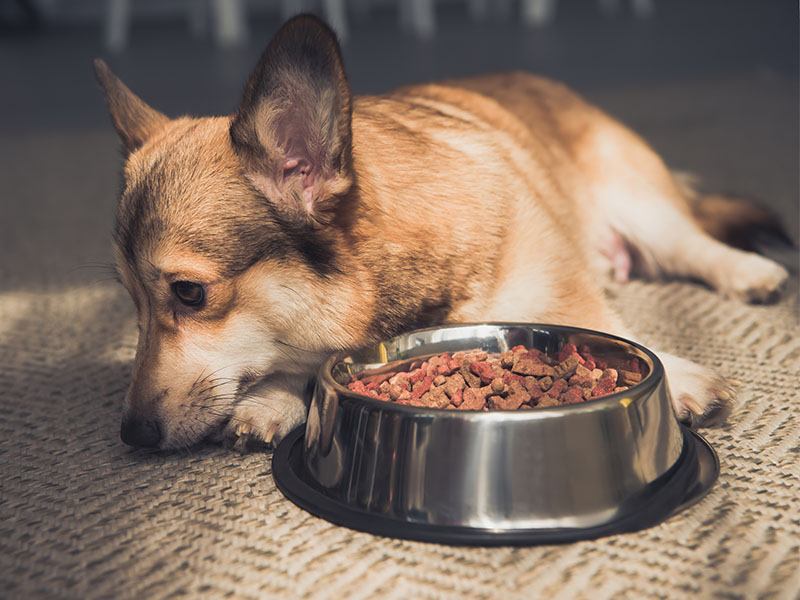How does it start?
Dogs and cats may commonly develop variable eating patterns when experiencing a gastrointestinal upset or recovering from a systemic illness. Negative food associations may develop directed at a particular food, flavor or smell and that experience of not feeling well. This pattern may wane over time, or it might progress into persistent picky eating behaviors. It is common in our loving homes to offer a constant rotation of new foods, or possibly better, more tasty foods that are preferred which may inspire some dogs/cats to “hold out” for a more favorite alternative, or more tasty treats. Commonly, they also may seek attention with this cycle and loving owners might reward this behavior.
Is this a medical issue or a behavior problem?
It can be difficult to determine if picky eating is the result of a medical issue for pets with disease conditions, or if this is now a complicating behavior problem. I usually say – “I give the dog (or cat) credit” – this means that there is a medical issue until proven otherwise and perhaps we have not diagnosed it yet. Gastrointestinal diseases may commonly have normal baseline tests and require more advanced diagnostic investigation. Medical evaluation will involve repeating physical examinations, baseline testing, imaging (radiographs or ultrasound preferred), specific organ function testing (liver, gastrointestinal, renal), etc.
What is a behavior problem is strongly suspected?
This can be a learned behavior and is a result of living in a caring and loving home. In these cases, we must revisit setting some rules on feeding practices to help reduce choices and hopefully increase the likelihood of eating the foods that are truly best for any current medical concerns.
What are my next steps?
- Review medical concerns first with your primary care veterinarian and make sure all known conditions are optimally medically managed. Medication trials to address nausea or inappetence may include antacids (omeprazole, famotidine), coating agents (sucralfate), anti-nausea medication (Cerenia (maropitant), ondansetron), and appetite stimulants (mirtazapine, Entyce). It is essential to be sure a medical diagnosis is established and managed well. A trial on a medication may be recommended to confirm if subclinical nausea is present – a positive response supports an underlying medical cause is present.
Keep in mind that there is no special diet or food ingredient that will reliably and permanently overcome inappetence resulting from medical causes.
- If medical causes are ruled out as the primary cause of inappetence/food refusal, then we must next consider potential behavioral causes.
Consider these strategies to help reduce mealtime manipulation:
- Set a regular feeding schedule and stick to it – consider feeding 2 – 3 times per day at the same times.
- Eliminate ALL treats and snacks – we want some reliable hunger for meals and the preferred diet. Some dogs will survive on treats and reject their balanced, appropriate foods.
- Choose a feeding location that is quiet, free of distractions, separate from other pets or noise.
- Feed the meal on a paper plate, warm the food slightly to increase aroma, then serve.
- Allow 20-30 minutes for eating, do not give attention while the food is offered. Resist hand feeding or coaxing to eat if possible.
- If the food is consumed, be sure to give lots of praise and hugs AFTER the meal is eaten completely, not during the eating process.
- If no food is consumed, take away the food. A meal can be returned to the refrigerator and offered one more time safely that day or next morning. After 2 offerings, I recommend discarding the food and serving a fresh meal option.
- It is okay if 1 or 2 meals in one day or even in the next day are refused (the exception to this is for diabetic pets, those that experience hypoglycemia or underweight pets; always check with your veterinarian if you are concerned about prolonged food refusal). Some very stubborn dogs will resist and need to learn there are new rules concerning eating. This may take some time and follow an up and down pattern until they adapt to these new rules around eating.
- Incorporate safe and appropriate exercise into the daily routine. Activity will increase appetite and improve quality of life for every pet. This can support and encourage appetite. Always have an exercise regimen approved by your primary care veterinarian and introduce gradually at the level appropriate for your pet’s current physical condition.
- Monitor body weight. Weight loss should be avoided. If your pet is refusing foods but not losing weight, consider that excess calories in the current food plan may be a cause.
- MOST IMPORTANTLY: If food refusal is persistent or new clinical signs arise (lethargy, vomiting, diarrhea, etc.), then medical re-evaluation is indicated as soon as possible. Repeat diagnostic testing and alternative medications may be needed to support appetite.
- For some pets with disease conditions, assisted feeding (feeding tube placement) may be required to overcome a cycle of food refusal and to maintain appropriate food intakes. This can be a stress free and kind way to administer food, medication and hydration if needed. Certain disease states greatly benefit from assisting feeding including chronic kidney disease, certain liver diseases, gastrointestinal diseases and others. Many owners choose assisted feeding to support their pet’s comfort and recovery from illness. We are happy to discuss option if indicated.
How can I support my Picky Eater when recovering from an illness or introducing a new food?
- Allow a gradual introduction of any new recipe or food item as well as any supplements. This is very helpful when transitioning to a new diet. I recommend using the foods that have been eaten well in the past and adding new foods in increasing quantity (Consider 75% old diet + 25% new diet for several days, then 50% old diet + 50% new diet for several days, etc.). Some dogs and cats will tolerate foods mixed together, while others may prefer them side by side. Our goal is to slowly move toward a more optimal nutritional profile to manage current medical problems. This process may take days or even a few weeks.
- Blend or puree foods to accommodate a preference for smooth foods or to reduce the chance of picking out favorite foods and leaving behind the rest. This can be some or all of the ingredients in the recipe.
- Flavor meals with a small addition or syrup, honey, fruit purees, or fruit flavored baby foods (do not use if diabetic). Some dogs like sweet or savory flavors. Experiment to see what your dog prefers, then use this to flavor the recipes in small quantity. Avoid high protein, high fat or high sodium foods. A small amount of yogurt is also acceptable. Be sure all toppers are compliant if on a Hypoallergenic Food Trial (ask us or your veterinarian).
- Experiment with other savory flavorings such as fat free gravies (turkey, chicken or pork available in a jar), low sodium chicken broth, bone broths, tuna juice, salmon juice, etc. Save juices from cooking meats (add additional water to create a broth) and use to flavor meals. If fat restriction is needed, cool these liquids in the refrigerator and skim away the fat layer that congeals on the surface before adding to meals.
- Consider other flavor additives as a topper in small quantity with meals such as a sprinkle of parmesan cheese, nutritional yeast, bonito flakes, tomato powder (cats) or Purina® Fortiflora (a probiotic that has a pleasing flavor to most dogs/cats) or Purina Hydracare (water additive).
- Again, always confirm food toppers as appropriate with your veterinarian or consult with us. If your pet is on a Hypoallergenic Feeding Trial, you will need to stick with novel proteins (and possibly also carbohydrate sources).
Laura Gaylord, DVM, DACVIM (Nutrition)
Updated 7.17.22

